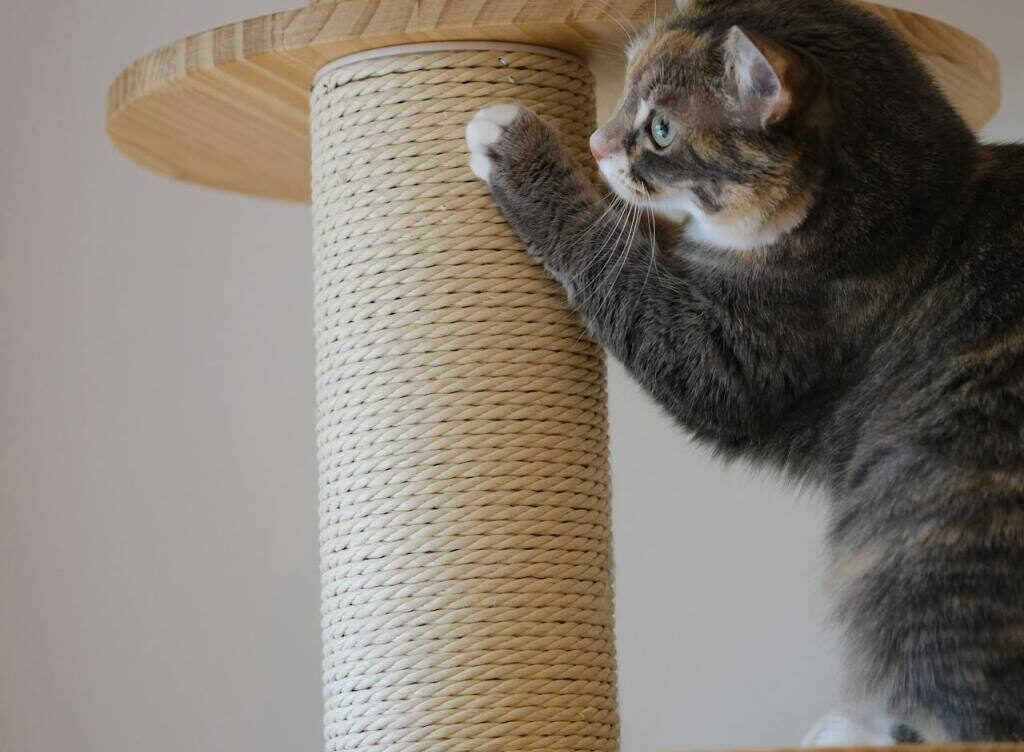
Train Your Cat to Love the Scratching Post: Expert Tips for Happy Claws
Claw-some Training: How to Encourage Your Cat to Use a Scratching Post
Understanding Your Cat’s Need to Scratch
Every cat owner knows that cats love to scratch, but why do they do it? Scratching helps cats keep their claws sharp, mark their territory, and stretch their muscles. It’s a perfectly natural and necessary behavior. To prevent your beloved feline from turning your furniture into a scratching zone, providing a suitable scratching post is crucial. By understanding this innate need, you can redirect the behavior to a more appropriate outlet.
Research from the Humane Society emphasizes the importance of scratching for a cat’s mental and physical health. It’s not just about claw maintenance; it’s also a form of expression and comfort for your cat.
Ensuring your scratching post meets certain criteria can make all the difference. It needs to be sturdy, tall enough for your cat to stretch fully, and covered in a material that’s satisfying to scratch.
Choosing the Right Scratching Post
Selecting the perfect scratching post can be almost as challenging as training your cat to use it! Cats have personal preferences for the type of scratching surface they like. Some prefer sisal fabric over carpeted options, while others might lean towards wood or corrugated cardboard. Observation is key—notice where and what your cat prefers to scratch to guide your choice.
Placement also plays a significant role in scratching post success. Ideally, the post should be near where your cat sleeps or in an area they frequent often. Cats often like to stretch and scratch upon waking, making proximity to their resting area a strategic choice.
According to a study published in Applied Animal Behaviour Science, cats showed a higher preference for scratching posts that were placed in central areas of the home where families spend most of their time. This helps in making the scratching post an attractive spot for your feline.
Training Your Cat to Use the Scratching Post
Now that you have the right scratching post and its ideally placed, how do you get your cat to start using it? Introduce your cat to the new scratching post by gently placing them near it and using positive reinforcement. Encourage interaction with the scratching post by dangling a toy near it, so they claw at the post, not the toy. Praising them and offering treats when they use the post can reinforce this behavior.
In addition to treats, catnip can be a powerful ally in training. Sprinkling catnip on the scratching post or using a catnip spray can attract your cat to the area and encourage them to scratch there. Not all cats are influenced by catnip, so observations and adjustments are necessary to see what works best with your pet.
If your cat remains reluctant, don’t resort to negative reinforcement. This could lead to stress and undesirable behaviors. Instead, consult with a feline behaviorist or your veterinarian for advice tailored to your specific situation.
Remember, patience is key in any aspect of pet training. Cats are creatures of habit and might take some time to adjust to new items in their environment. Consistency and positive reinforcement will eventually make your cat love their new scratching post, keeping both their claws and your furniture safe.
Promoting Long-Term Use of the Scratching Post
To ensure your cat continues to use the scratching post over time, it’s important to keep it attractive to them. Keeping the scratching post in good condition and replacing it when it becomes too worn is essential. A worn-out post might not be as satisfying for your cat to scratch, which could lead them back to your furniture.
Additionally, varying the type of scratching posts can also keep your cat interested. Offering different shapes, sizes, and textures of scratching posts can cater to your cat’s preferences and keep them engaged.
Lastly, maintain the habit of rewarding your cat when you catch them using the scratching post. Continued positive reinforcement helps reassure your cat that they are doing the right thing, which can be particularly helpful during any initial resistance phase or when introducing new styles of scratching posts.
The journey to getting your cat to love their scratching post involves understanding, patience, and a bit of strategic placement. By following these guidelines, you’re well on your way to protecting your furniture and keeping your furry friend happy and healthy. Always consult with a professional if you face ongoing challenges, as they can provide valuable insights tailored to your cat’s specific needs.
